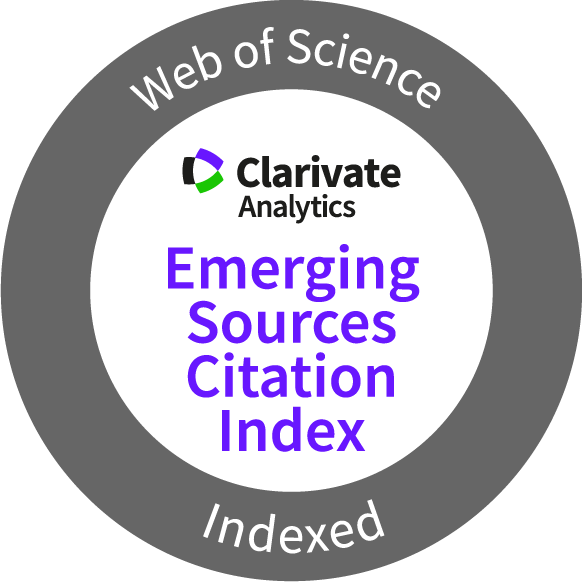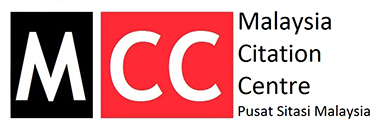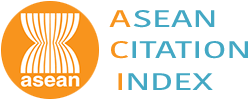In vitro Regeneration and ISSR-Based Genetic Fidelity Evaluation of Stevia rebaudiana
Keywords:
Direct organogenesis, genetic fidelity, in vitro, ISSR markers, steviaAbstract
Steviol glycoside, which is a natural sweetener extracted from Stevia rebaudiana, is globally recognized. For consumers, this compound is widely utilized by diabetic patients and demonstrates numerous therapeutic effects. However, the escalating demand for this natural sweetener and medicinal herb impacts the availability of stevia. Conventional propagation methods, such as seed and stem cutting, frequently result in low germination rates. To address these limitations, the present research explores the potential of in vitro clonal propagation to ensure a consistent supply of planting material. Therefore, the objective of this study was to develop an efficient protocol for tissue culture of S. rebaudiana accession MS007. The highest regeneration frequency (85.19% & 86.67% for shoot tips & nodes, respectively) and maximum shoot number (14.30 & 12.77 shoots/explant, respectively) were observed on Murashige and Skoog (MS) medium supplemented with 1.0 mg/L 6-benzylaminopurine (BAP). Half-strength MS medium supplemented with 0.5 mg/L indole-3-butyric acid (IBA) was the optimal medium for rooting, exhibiting the highest rooting percentage, root number, and root length. Subsequently, the plantlets were acclimatised in plastic cups containing peat moss, and it was observed that 86.67% of plantlets survived when transplanted to the field. The outcome of inter-simple sequence repeat (ISSR) analysis using 38 ISSR primers confirmed the genetic fidelity between the in vitro regenerated plants and the mother plant. This study successfully developed an in vitro propagation technique for stevia to produce true-to-type clonal plants. The obtained results can be used to mass-produce stevia accession MS007 to meet market demand.
Downloads
Metrics
References
Abdel-Aaal, R.A., Abdel-Rahman, M.S., Al Baypumi, S. & Ali, L.A. 2021. Effect of stevia aqueous extract on the antidiabetic activity of saxagliptin in diabetic rats. Journal of Ethnopharmacology, 265: 113188. DOI: https://doi.org/10.1016/j.jep.2020.113188
Abdul Rashid, R., Mohamad, A., Awang, M.R., Mutaat, H.H., Mohamad, S.A., Abu Hasan, A., Maskom, M.M. & Mohd Nahar, S.K. 2013. Isolation and optimization of inter-simple sequence repeat (ISSR) technique for Pleurotus sajor caju towards environmental study in support of the country’s nuclear power programme. Jurnal Sains Nuklear Malaysia, 25(1): 1-8.
Ahmad, N., & Anis, M. 2007. Rapid clonal multiplication of a woody tree, Vitex negundo L. through axillary shoots proliferation. Agroforestry Systems, 71: 195–200. DOI: https://doi.org/10.1007/s10457-007-9078-1
Ahmed, M.E.A.E. 2022. In vitro propagation for conservation and genetic fidelity of the near threatened Dimocarpus longan plant. Journal of Genetic Engineering and Biotechnology, 20: 130. DOI: https://doi.org/10.1186/s43141-022-00406-4
Ajami, M., Seyfi, M., Hosseini, F.A.P., Naseri, P., Velayati, A., Mahmoudnia, F., Zahedirad, M. & Hajifaraji, M. 2020. Effects of stevia on glycemic and lipid profile of type 2 diabetic patients: A randomized controlled trial. Avicenna Journal of Phytomedicine,10(2): 118-127.
Ali, H., Musa, I.F., Abu Bakar, N.A., Karsani, S.A. & Yaacob, J.S. 2019. In vitro regeneration and ISSR-based genetic fidelity analysis of Ortosiphon stamineus Benth. Agronomy, 9(12): 778. DOI: https://doi.org/10.3390/agronomy9120778
Alttaher, A.G.A., Yusof, Z.N.B., Mahmood, M. & Shaharuddin, N.A. 2020. High-frequency induction of multiple shoots and plant regeneration from cotyledonary node explants of Tongkat Ali (Eurycoma longifolia). Applied Ecology and Environmental Research, 18(5): 6321-6333. DOI: https://doi.org/10.15666/aeer/1805_63216333
Anbazhagan, M., Kalpana, M., Rajendran, R., Natarajan, V. & Dhanave, D. 2010. In vitro production of Stevia rebaudiana Bertoni. Emirates Journal of Food and Agriculture, 22(3): 216-222. DOI: https://doi.org/10.9755/ejfa.v22i3.4891
Asande. L.K., Ombori, O., Nyaboga, E.N. & Oduor, R.O. 2020. Efficient shoot organogenesis using leaf disc and nodal explants of passion fruit (Passiflora edulis Sims) and genetic fidelity assessment using sequence-related amplified polymorphism (SRAP) markers. International Journal of Agronomy, 2020: 3205710. DOI: https://doi.org/10.1155/2020/3205710
Bhojwani, S.S. & Dantu, P.K. 2013. Plant Tissue Culture: An Introductory Text. Springer, New Delhi. DOI: https://doi.org/10.1007/978-81-322-1026-9
Borsai O., Hârța M., Szabo K., Kelemen C.D., Andrecan F.A., Codrea M.M. & Clapa D. 2020. Evaluation of genetic fidelity of in vitro-propagated blackberry plants using RAPD and SRAP molecular markers. Horticultural Science (Prague), 47: 21–27. DOI: https://doi.org/10.17221/20/2019-HORTSCI
Castañeda-Saucedo, M.C., Tapia-Campos E., del Pilar Ramírez-Anaya, J. & Beltrán, J. 2020. Growth and development of Stevia cuttings during propagation with hormones in different months of the year. Plants, 9(3): 294. DOI: https://doi.org/10.3390/plants9030294
Ceole, L.F., Companhoni, M.V.P., Lopes, S.M.S., de Oliveira, A.J.B., Gonçalves, R.A.C., Filho, B.P.D., Nakamura, C.V. & Ueda-Nakamura, T. 2020. Anti-herpes activity of polysaccharide fractions from Stevia rebuadiana leaves. Natural Product Research, 34(11): 1558-1562. DOI: https://doi.org/10.1080/14786419.2018.1516662
Chirumamilla, P., Gopu, C., Jogam, P. & Taduri, S. 2021. Highly efficient rapid micropropagation of genetic fidelity of regenerants by ISSR and SCoT markers of Solanum khasianum Clarke. Plant Cell, Tissue and Organ Culture, 144: 397-407. DOI: https://doi.org/10.1007/s11240-020-01964-6
Deonas, A.N., Zorzenon, M.R.T., de Oliveira, J.P., da Silva, D.V., Cabeça, C.L.S., Mori, M.A., da Costa, S.C., Milani, P.G. & de França, E.J.G. 2022. Stevia Rebaudiana fraction presents broad-spectrum antibacterial action and antibiofilm action for Staphylococcus aureus. Brazilian Journal of Development, 8(7): 49529-49541. DOI: https://doi.org/10.34117/bjdv8n7-057
Dönmez, D., Erol, H, M., Biçen, B., Şimşek, Ö. & Kaçar Aka, Y. 2022. The efffects of different strength of MS media on in vitro propagation and rooting of Spathiphyllum. Anadolu Journal of Agricultural Sciences, 37(3):583-592. DOI: https://doi.org/10.7161/omuanajas.1082219
Doyle, J.J. & Doyle, J.L. 1987. A rapid DNA isolation procedure for small quantities of fresh leaf tissue. Phytochemical Bulletin, 19: 11-15.
Ferris, E. 2023. The benefits and applications of plant tissue culture: A revolutionary method of plant propagation. Journal of Plant Biotechnology and Microbiology, 6(1): 133.
Ghose, A.K., Abdullah, S.N.A., Md Hatta, M.A. & Megat Wahab, P.E. 2022. In vitro regeneration of Stevia (Stevia rebaudiana Bertoni) and evaluation of the impacts of growth media nutrients on the biosynthesis of steviol glycosides (SGs). Agronomy,12: 1957. DOI: https://doi.org/10.3390/agronomy12081957
Hadia, A.H., Badawy, O.M. & Afaf, M. H. 2008. Genetic relationships among some Stevia (Stevia rebaudiana Bertoni) accessions based on ISSR analysis. Research Journal of Cell and Molecular Biology, 2(1):1-5.
Hassanen, S.A. & Khalil, R. 2013. Biotechnological studies for improving of stevia (Stevia rebaudiana Bertoni) in vitro plantlets. Middle-East Journal of Scientific Research, 14(1): 93-106.
Jadid, N., Anggaraeni, S., Nur Ramadani, M.R., Arieny, M. & Mas’ud, F. 2024. In vitro propagation of Indonesian stevia (Stevia rebaudiana) genotype using axenic nodal segments. BMC Research Notes, 17: 45. DOI: https://doi.org/10.1186/s13104-024-06703-0
Joshi, P.R., Pandey, S., Maharjan, L. & Pant, B. 2023. Micropropagation and assessment of genetic stability of Dendrobium transparens Wall. Ex Lindl. using RAPD and ISSR markers. Frontiers in Conservation Science, 3: 1083933. DOI: https://doi.org/10.3389/fcosc.2022.1083933
Kim, N.C. & Kinghorn, A.D. 2002. Highly sweet compounds of plant origin. Archives of Pharmacological Research, 25(6): 725-746. DOI: https://doi.org/10.1007/BF02976987
Ludwig-Müller, J. 2000. Indole-3-butyric acid in plant growth and development. Plant Growth Regulation, 32(2-3): 219-230. DOI: https://doi.org/10.1023/A:1010746806891
Madan, S., Ahmad, S., Singh, G.N., Kohli, K., Kumar, Y., Singh, R. & Garg, M. 2010. Stevia rebaudiana (Bert.) Bertoni-A review. Indian Journal of Natural Products and Resources, 1: 267-286.
Mahardhini, A.D., Anwar, S. & Karno. 2022. BAP and Kinetin application for in vitro bud induction of vanilla (Vanilla planifolia Andrews.) from stem node explants in the initiation stage. IOP Conference Series: Earth and Environmental Science, 1246: 012030. DOI: https://doi.org/10.1088/1755-1315/1246/1/012030
Majumder, S. & Rahman, M.M. 2016. Micropropagation of Stevia rebaudiana Bertoni. through direct and indirect organogenesis. Journal of Innovations in Pharmaceuticals and Biological Sciences, 3(3): 47-56.
Mattick C. S. 2018. Cellular agriculture: the coming revolution in food production. Bulletin of the Atomic Scientists, 74(1): 32–35. DOI: https://doi.org/10.1080/00963402.2017.1413059
Myint, K.Z., Zhou, Z., Shi, Q., Chen, J., Dong, X. & Xia, Y. 2023. Stevia polyphenols, their antimicrobial and anti-inflammatory properties, and inhibitory effect on digestive enzymes. Molecules, 28: 7572. DOI: https://doi.org/10.3390/molecules28227572
Nower, A.A. 2014. In vitro propagation and synthetic seeds production: An efficient method for Stevia rebaudiana Bertoni. Sugar Technology, 16(1): 100-108. DOI: https://doi.org/10.1007/s12355-013-0228-7
Othman, H.S., Osman, M. & Zainuddin, Z. 2018. Genetic variabilities of Stevia rebaudiana Bertoni cultivated in Malaysia as revealed by morphological, chemical and molecular characteristics. AGRIVITA Journal of Agricultural Science, 40(2): 267-283. DOI: https://doi.org/10.17503/agrivita.v40i2.1365
Papaefthimiou, M., Kontou, P.I., Bagos, P.G. & Braliou, G.G. 2023. Antioxidant activity of leaf extracts from Stevia rebaudiana Bertoni exerts attenuating effect on diseased experimental rats: A Systematic review and meta-analysis. Nutrients,15: 3325. DOI: https://doi.org/10.3390/nu15153325
Patel, R.M. & Shah, R.R. 2009. Regeneration of Stevia plant through callus culture. Indian Journal of Pharmaceutical Sciences, 46-50. DOI: https://doi.org/10.4103/0250-474X.51954
Pradhan, S., Paudel, Y.P., Qin, W. & Pant, B. 2023. Genetic fidelity assessment of wild and tissue culture regenerants of threatened orchid, Cymbidium aloifolium using molecular markers. Plant Gene, 34: 100418. DOI: https://doi.org/10.1016/j.plgene.2023.100418
Qi, F. & Zhang, F. 2020. Cell cycle regulation in the plant response to stress. Frontiers in Plant Science, 10:1765. DOI: https://doi.org/10.3389/fpls.2019.01765
Razali, A., Samsulrizal, N.H. & Zainuddin, Z. 2020. Identification of genes involved in flowering in Stevia rebaudiana using expressed sequence tags (ESTs). Asia-Pacific Journal of Molecular Biology and Biotechnology, 28(2): 105-112. DOI: https://doi.org/10.35118/apjmbb.2020.028.2.09
Rolnik, A. & Olas, B. 2021. The plants of the Asteraceae family as agents in the protection of human health. International Journal of Molecular Sciences, 22: 3009. DOI: https://doi.org/10.3390/ijms22063009
Royani, J.I., Chotimah, S., Utami, R.N., Fatma, W.S., Susiyanti & Fatmawaty, A.P. 2021. Effect of benzilaminopurine and kinetin for shoot multiplication of Indigofera (Indigofera zollingeriana Miq.) by in vitro culture. IOP Conference Series: Earth and Environmental Science, 637: 012053. DOI: https://doi.org/10.1088/1755-1315/637/1/012053
Saad, A., Khan, F.A., Hayee, A. & Nazir, M.S. 2014. A review on potential toxicity of artificial sweeteners vs safety of Stevia: A natural bio-sweetner. Journal of Biology, Agriculture and Healthcare, 4(15): 137-147.
Saadh, M.J., Thiyagarajan, S., Cotrina-Aliaga, J.C., Suleiman, M.I., Fahdil, A.A., Ahjel, S., Soleimanian, A., Mirzaei, M. & Harismah, K. 2023. Effects of Stevia on hypertension of metabolic syndrome: A systematic review. Journal of Medicinal and Chemical Sciences, 6: 2407-2418.
Samsulrizal, N.H., Zainuddin, Z., Noh, A.L. & Sundram, T.C. 2019. A review of approaches in steviol glycosides synthesis. International Journal of Life Sciences and Biotechnology, 2(3): 145-57. DOI: https://doi.org/10.38001/ijlsb.577338
Saraiva, A., Carracosa, C., Raheem, D., Ramos, F. & Raposo, A. 2020. Natural sweeteners: The relevance of food naturalness for consumers, food security aspects, sustainability and health impacts. International Journal of Environmental Research and Public Health, 17(17): 6285. DOI: https://doi.org/10.3390/ijerph17176285
Seo, E,H., Kim, H. & Kwon, O. 2019. Association between total sugar intake and metabolic syndrome in middle-aged Korean men and women. Nutrients, 11(9): 2042. DOI: https://doi.org/10.3390/nu11092042
Simlat, M., Szewczyk, A. & Ptak, A. 2020. Melatonin promotes seed germination under salinity and enhances the biosynthesis of steviol glycosides in Stevia rebaudiana Bertoni leaves. PLoS One, 15(3): e0230755. DOI: https://doi.org/10.1371/journal.pone.0230755
Sugla, T., Purkayastha, J., Singh, S.K., Solleti, S.K. & Sahoo, L. 2007. Micropropagation of Pongamia pinnata through enhanced axillary branching. In Vitro Cellular and Developmental Biology-Plant, 43(5): 409-414. DOI: https://doi.org/10.1007/s11627-007-9086-x
Tegen, H. & Mohammed W. 2016. The role of plant tissue culture to supply disease free planting materials of major horticultural crops in Ethiopia. Journal of Biology, Agriculture and Healthcare, 6 (1): 122–129.
Thakur, S., Shruti, Hashmi, S., Mishra, S., Ekka, S.K., Kushwaha, A. & Kujur, R. 2024. A review on plant tissue culture. Asian Journal of Biology, 20(2): 14-18. DOI: https://doi.org/10.9734/ajob/2024/v20i2387
Thiyagarajan, M. & Perumal, V. 2012. Large scale in vitro propagation of Stevia rebaudiana (Bert) for commercial application: Pharmaceutically important and antidiabetic medicinal herb. Industrial Crops and Products, 37(1): 111-117. DOI: https://doi.org/10.1016/j.indcrop.2011.10.037
Ting, W.T., Liew, F.C., Lim, W.Y., Subramaniam, S. & Chew, B.L. 2018. Shoot induction from axillary shoot tip explants of fig (Ficus carica) cv. Japanese BTM6. Tropical Life Sciences Research, 29(2): 165-174. DOI: https://doi.org/10.21315/tlsr2018.29.2.11
Uddin, M.S., Chowdhury, M.S.H., Khan, M.M.M.H., Uddin, M.B., Ahmed, R. & Baten, M. 2006. In vitro propagation of Stevia rebaudiana Bert in Bangladesh. African Journal of Biotechnology, 5(13): 1238-1240.
van Staden, J., Zazimalova E. & George E.F. 2008. Plant growth regulators II: cytokinins, their analogues and antagonists. In E. F. George, M.A. Hall and G.J. De Klerk (Eds.). Plant Propagation by Tissue Culture (3rd Edition). Springer, Dordrecht, Netherlands.
Verma, N.K. & Panda, P. 2018. A study on Stevia rebaudiana: A review. International Journal of Chemical Science, 2(2): 1-6.
Verma, P., Mathur, A.K., Jain, S.P. & Mathur, A. 2012. In vitro conservation of twenty-three overexploited medicinal plants belonging to the Indian sub continent. The Scientific World Journal, 2012: 929650. DOI: https://doi.org/10.1100/2012/929650
Watanabe, T., Fujikawa, K., Urai, S., Iwaki, K., Hirai, T., Miyagawa, K., Uratani, H., Yamagaki, T., Nagao, K., Yokoo, Y. & Shimamoto, K. 2023. Identification, chemical synthesis, and sweetness evaluation of rhamnose or xylose containing steviol glycosides of Stevia (Stevia rebaudiana) leaves. Journal of Agricultural and Food chemistry, 71(29): 11158-11169. DOI: https://doi.org/10.1021/acs.jafc.3c01753
Wijerathna-Yapa, A., Ramtekey, V., Ranawaka, B. & Basnet, B.R. 2022. Applications of in vitro tissue culture technologies in breeding and genetic improvement of wheat. Plants,11: 2273. DOI: https://doi.org/10.3390/plants11172273
Yuan, X., Dai, Z.H., Wang, X.D. & Zhao, B. 2009. Assessment of genetic stability in tissue-cultured products and seedlings of Saussurea involucrata by RAPD and ISSR markers. Biotechnology Letters, 31(8): 1279-1287. DOI: https://doi.org/10.1007/s10529-009-9984-6
Published
How to Cite
Issue
Section
Any reproduction of figures, tables and illustrations must obtain written permission from the Chief Editor (wicki@ukm.edu.my). No part of the journal may be reproduced without the editor’s permission




















